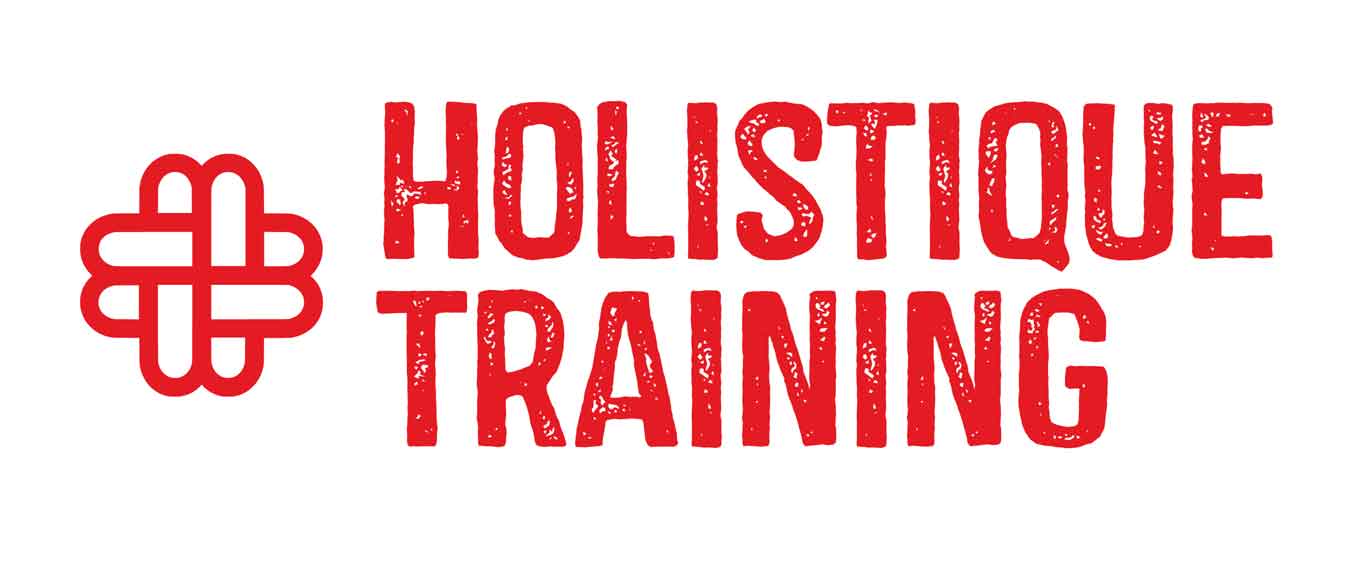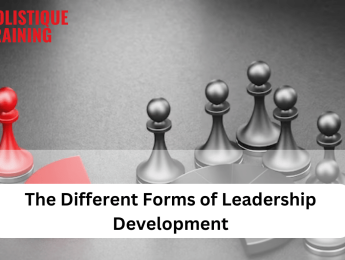- Table of Contents
- Introduction
- What is Force Field Analysis?
- The History and Development of Lewin’s Force Field Analysis
- Key Concepts in Force Field Analysis
- 1. Driving Forces (Factors That Promote Change)
- 2. Restraining Forces (Factors That Resist Change)
- 3. Equilibrium (The Balance Between Forces)
- Interplay Between the Three Concepts
- The Advantages of Force Field Analysis
- 1. Provides a Clear Visual Representation of Change Dynamics
- 2. Encourages a Structured and Systematic Approach to Problem-Solving
- 3. Helps Identify Barriers to Change
- 4. Supports Effective Change Management
- 5. Enhances Strategic Decision-Making
- 6. Promotes Team Collaboration and Engagement
- 7. Enables Prioritization of Actions for Maximum Impact
- 8. Aids in Conflict Resolution
- 9. Helps Reduce Resistance to Change
- 10. Can Be Applied to Various Organizational Functions
- How to Conduct a Force Field Analysis
- Step 1: Define the Change or Decision to Be Made
- Step 2: Identify the Driving Forces (Forces for Change)
- Step 3: Identify the Restraining Forces (Forces Against Change)
- Step 4: Assign Scores to Each Force
- Step 5: Analyze the Balance Between Forces
- Step 6: Develop Strategies to Strengthen Driving Forces and Weaken Restraining Forces
- Step 7: Re-Evaluate and Adjust
- Step 8: Implement the Change with a Clear Action Plan
- Final Thoughts
- Applications of Force Field Analysis in Your Organization
- 1. Change Management
- 2. Strategic Planning
- 3. Risk Assessment and Management
- 4. Conflict Resolution
- 5. Process Improvement and Efficiency Enhancement
- 6. Leadership Development and Organizational Culture
- 7. Customer Experience and Market Positioning
- 8. Employee Engagement and Workforce Optimization
- Example of Force Field Analysis
- Scenario: Implementing Remote Work Policies
- Conclusion
Introduction
Navigating change in any organization can be a complex challenge. Leaders, managers, and decision-makers often face resistance when implementing new initiatives, even when those changes are necessary for growth. Understanding the forces that drive and hinder change is crucial to ensuring a successful transition. One of the most effective tools for analyzing these forces is Force Field Analysis—a structured method that helps organizations identify the factors influencing a decision or change process.
This blog post will explore the concept of Force Field Analysis, its origins, key principles, advantages, and step-by-step guidance on how to conduct one. Additionally, we will discuss its applications in organizations, provide an example, and highlight why it remains a valuable tool for strategic decision-making and problem-solving.
What is Force Field Analysis?
Force Field Analysis is a decision-making technique developed by social psychologist Kurt Lewin. It is used to evaluate the factors that influence a particular situation, decision, or change. The core idea behind the method is that any situation is maintained by a balance between driving forces (which push for change) and restraining forces (which resist change).
By identifying these forces, organizations and individuals can determine whether change is feasible, where resistance may arise, and what actions can be taken to facilitate or counteract those forces. This structured approach makes it easier to analyze complex problems and develop effective strategies for improvement.
At its core, Force Field Analysis is a visual representation that helps decision-makers see the dynamics at play within a system. By plotting out the forces driving and resisting change, organizations can gain clarity on what needs to be reinforced or mitigated to achieve a desired outcome.
The History and Development of Lewin’s Force Field Analysis
Kurt Lewin, a German-American psychologist, introduced Force Field Analysis in the 1940s as part of his broader research on social psychology and organizational behavior. His work laid the foundation for modern change management theories and behavioral science applications in business.
Lewin’s research focused on group dynamics, leadership, and motivation, which led him to develop theories explaining how people and organizations respond to change. He proposed that behavior is a function of an individual's environment, and the forces within that environment determine whether change will occur.
Force Field Analysis was a key component of Lewin’s Change Management Model, which consists of three stages:
- Unfreeze – Preparing the organization for change by identifying and addressing resistance.
- Change – Implementing the change while reinforcing driving forces.
- Refreeze – Stabilizing the change by embedding it into organizational culture.
This framework remains widely used in business, psychology, and organizational development, making Force Field Analysis an essential tool for managing transitions effectively.
Key Concepts in Force Field Analysis
Force Field Analysis is based on the idea that every situation or decision is influenced by two opposing forces: driving forces and restraining forces. These forces interact to create a state of equilibrium, determining whether change will occur. Understanding these key concepts is essential to using the tool effectively.
1. Driving Forces (Factors That Promote Change)
Driving forces are the elements that push an organization toward change. They create momentum, encourage new initiatives, and support progress. These forces can originate from both internal and external sources.
Internal Driving Forces:
- Leadership Vision and Support: Strong leadership advocating for change can inspire employees to adopt new strategies.
- Innovative Culture: Organizations with a culture of continuous improvement are more likely to embrace change.
- Operational Inefficiencies: If a company experiences inefficiencies in processes, it may seek change to enhance productivity.
- Employee Demand for Change: When employees push for better working conditions, policies, or technologies, it can accelerate change initiatives.
External Driving Forces:
- Market Competition: Increased competition can force businesses to innovate and improve their services.
- Technological Advancements: The emergence of new technology can push companies to upgrade systems and adopt digital transformation.
- Regulatory Compliance: Government regulations may require businesses to adapt their policies and operations.
- Economic Shifts: Economic downturns or booms influence companies to revise their financial strategies.
- Customer Expectations: Changing consumer demands, such as preferences for sustainable products, can drive innovation.
The stronger the driving forces, the more likely the organization will move toward change. However, if these forces are not substantial enough, they may not be able to overcome resistance.
2. Restraining Forces (Factors That Resist Change)
Restraining forces are the elements that resist change and create obstacles. They act as barriers that slow down or prevent progress. Like driving forces, restraining forces can also come from both internal and external sources.
Internal Restraining Forces:
- Employee Resistance: Fear of change, uncertainty about job security, and reluctance to learn new skills can cause employees to resist new initiatives.
- Rigid Organizational Structure: Companies with a hierarchical or bureaucratic structure may find it difficult to implement change.
- Lack of Resources: Budget constraints, limited staffing, or outdated technology can hinder progress.
- Conflicting Priorities: If multiple projects are competing for attention, change efforts may be deprioritized.
External Restraining Forces:
- Industry Regulations: Legal restrictions or compliance requirements can limit the scope of change.
- Market Uncertainty: Economic downturns or fluctuations in consumer demand may discourage companies from making major changes.
- Social and Cultural Norms: Changes that conflict with established workplace culture or societal expectations may face resistance.
- Competitor Reactions: Rival businesses may take steps to counteract a company’s change initiative, making it harder to succeed.
Restraining forces often stem from fear, uncertainty, or a lack of information. They must be addressed strategically to minimize resistance and create a smoother transition.
3. Equilibrium (The Balance Between Forces)
Equilibrium refers to the current state of balance between driving and restraining forces. In any given situation, an organization remains at equilibrium as long as these forces counteract each other.
- If driving forces are stronger, change happens more easily, as the push toward progress overcomes resistance.
- If restraining forces are stronger, change is unlikely to occur, as the barriers outweigh the incentives for transformation.
- If both forces are equal, no significant change happens because the system remains in balance.
To initiate and sustain change, organizations must disrupt the equilibrium by:
- Strengthening the driving forces (e.g., providing incentives, communicating benefits, securing leadership support).
- Reducing the restraining forces (e.g., addressing employee concerns, offering training, providing necessary resources).
- Doing both simultaneously for a more effective transformation.
Interplay Between the Three Concepts
In real-world scenarios, driving forces and restraining forces interact dynamically. The key to successful change management is not just identifying these forces but strategically influencing them to shift equilibrium in the desired direction.
For example, if a company wants to implement anew customer relationship management (CRM) system, it might identify driving forces such as improved efficiency, better customer service, and leadership support. However, it might also face restraining forces like employee resistance, training costs, and integration issues. By reinforcing the benefits of the CRM system while addressing concerns through training and incentives, the company can shift the equilibrium in favor of change.
Understanding the balance between these forces helps organizations make informed decisions about where to focus their efforts to drive successful transformations.
The Advantages of Force Field Analysis
Force Field Analysis is a powerful decision-making and problem-solving tool that provides a structured approach to assessing change initiatives. It helps organizations, teams, and individuals analyze the forces that drive and resist change, making it easier to implement effective strategies. Below are some of the key advantages of using Force Field Analysis in business and organizational decision-making:
1. Provides a Clear Visual Representation of Change Dynamics
One of the greatest strengths of Force Field Analysis is that it presents change dynamics in a simple and visual way. By mapping out driving and restraining forces side by side, teams can easily see the factors that influence a particular situation. This clarity allows decision-makers to quickly identify the most critical forces affecting their goals and determine where to focus their efforts.
For example, if a company wants to shift to remote work, a Force Field Analysis might show strong driving forces like employee preference, cost savings, and flexibility. At the same time, it could reveal restraining forces such as technological challenges, lack of managerial trust, and security risks. By seeing these factors clearly, leadership can take a targeted approach to reducing resistance.
2. Encourages a Structured and Systematic Approach to Problem-Solving
Instead of making impulsive decisions or relying on intuition, Force Field Analysis provides a structured method for evaluating change. It forces teams to systematically consider both positive and negative factors before making a decision. This structured approach ensures that no critical element is overlooked and that the decision-making process is objective and well thought out.
For instance, a company planning a product launch can use Force Field Analysis to evaluate whether the current market conditions favor success or whether existing challenges might lead to failure. This systematic review reduces the risk of launching an unprepared or ill-conceived product.
3. Helps Identify Barriers to Change
Understanding the obstacles to change is just as important as knowing the benefits. Force Field Analysis highlights the specific restraining forces that could hinder progress. Once identified, these obstacles can be directly addressed through strategic planning, resource allocation, or targeted interventions.
For example, if employees resist a new software system due to a lack of training, the organization can proactively implement training programs, tutorials, or incentives to ease the transition. This ensures smoother adoption of the change rather than facing unexpected resistance later.
4. Supports Effective Change Management
Force Field Analysis is widely used in change management because it allows leaders to assess the feasibility of proposed changes before implementation. By analyzing the balance between driving and restraining forces, organizations can develop strategies to increase the likelihood of successful change.
A company undergoing a restructuring process can use Force Field Analysis to identify areas of resistance, such as employee uncertainty, communication gaps, or fear of job losses. By strengthening driving forces like leadership commitment, clear communication, and employee involvement, the organization can create a more supportive environment for change.
5. Enhances Strategic Decision-Making
When organizations face difficult decisions, Force Field Analysis helps leaders weigh different options and choose the most beneficial path. It provides a logical framework for evaluating potential risks and rewards, making it easier to justify decisions based on objective factors.
For instance, when deciding whether to expand into a new market, a company can analyze the driving forces (e.g., market demand, competitive advantage, growth potential) and restraining forces (e.g., cultural differences, regulatory hurdles, financial risks). By understanding these factors, leadership can make more informed strategic decisions.
6. Promotes Team Collaboration and Engagement
Since Force Field Analysis is a participatory tool, it encourages input from various stakeholders within an organization. Teams can collectively identify driving and restraining forces, fostering a sense of involvement and shared responsibility.
By involving employees, managers, and key stakeholders in the analysis, organizations can gain diverse perspectives, enhance buy-in, and create a culture of open communication. This is particularly useful in managing workplace change, as employees who feel heard are more likely to support new initiatives.
7. Enables Prioritization of Actions for Maximum Impact
Not all driving or restraining forces have the same level of influence. Force Field Analysis helps teams prioritize which forces to strengthen or weaken to maximize the impact of their efforts.
For example, if a business wants to increase customer retention, it might identify driving forces like high product quality and excellent customer service. However, restraining forces such as slow response times or high pricing might still hinder retention. By prioritizing improvements in response times (a major customer complaint), the business can make a more significant impact with fewer resources.
8. Aids in Conflict Resolution
Conflicts within teams or organizations often arise due to opposing viewpoints or resistance to change. Force Field Analysis helps identify the root causes of conflict and provides a framework for resolving disagreements.
For instance, if there is tension between two departments over resource allocation, conducting a Force Field Analysis can reveal the underlying concerns of each side. Understanding these forces allows management to mediate and implement solutions that address both teams’ needs.
9. Helps Reduce Resistance to Change
One of the biggest challenges organizations face when implementing change is overcoming employee resistance. Force Field Analysis makes resistance more visible and manageable by breaking it down into specific factors.
By openly discussing restraining forces and addressing concerns, organizations can create tailored solutions to reduce fear and uncertainty. Providing additional training, improving communication, and offering incentives are some ways to lower resistance and foster a positive environment for change.
10. Can Be Applied to Various Organizational Functions
Force Field Analysis is a highly versatile tool that can be applied across different business areas, including:
- Change management: Assessing whether a proposed change will be successful and how to enhance its effectiveness.
- Strategic planning: Evaluating business expansion, mergers, or process improvements.
- Risk assessment: Identifying and mitigating risks before implementing a new strategy.
- Process improvement: Streamlining operations and identifying inefficiencies.
- Conflict resolution: Understanding the factors contributing to workplace conflicts and finding solutions.
Because of its broad applicability, Force Field Analysis is useful in almost any situation where decision-making, planning, or change is involved.
The advantages of Force Field Analysis make it a valuable tool for any organization looking to implement change, resolve challenges, or improve decision-making. By providing a structured, visual approach to understanding the forces at play, it helps leaders and teams make informed choices while proactively managing resistance. Organizations that leverage Force Field Analysis effectively can enhance their ability to adapt, grow, and succeed in an ever-changing business environment.
How to Conduct a Force Field Analysis
Force Field Analysis is a structured approach that helps organizations, teams, or individuals assess the feasibility of a change initiative by identifying the forces that drive or resist it. The process involves defining the change, analyzing forces, and strategically strengthening or weakening certain elements to improve the chances of success. Below is a step-by-step guide on how to conduct a Force Field Analysis effectively.
Step 1: Define the Change or Decision to Be Made
The first step is to clearly define the situation, problem, or change you want to analyze. This could be a business decision, an organizational change, a project, or a process improvement.
Example: A company is considering implementing a hybrid work model where employees work from home three days a week and from the office two days a week.
To ensure clarity, the change should be stated in a neutral, objective way—neither positive nor negative—to avoid bias in the analysis.
Step 2: Identify the Driving Forces (Forces for Change)
Driving forces are the factors that push the organization toward implementing the change. These could be external or internal forces that create pressure for change, such as:
- Market demands
- Technological advancements
- Customer expectations
- Cost-saving opportunities
- Employee preferences
- Regulatory requirements
Example: In the case of the hybrid work model, some possible driving forces could include:
- Increased employee productivity
- Reduced office space costs
- Improved work-life balance
- Competitive advantage in talent acquisition
These forces should be listed and ranked based on their strength and impact on the proposed change.
Step 3: Identify the Restraining Forces (Forces Against Change)
Restraining forces are the factors that resist or hinder the change. These could be obstacles, risks, or concerns that make implementation difficult. Examples include:
- Fear of the unknown
- Resistance from employees
- Financial constraints
- Lack of necessary infrastructure
- Cultural or leadership resistance
Example: For the hybrid work model, potential restraining forces might include:
- Difficulty in maintaining team collaboration
- Cybersecurity and data security risks
- Managers’ reluctance to oversee remote teams
- Employees lacking proper home office setups
As with driving forces, these should be listed and evaluated in terms of their impact on the proposed change.
Step 4: Assign Scores to Each Force
Once the driving and restraining forces have been identified, the next step is to assign a score (typically from 1 to 5) to each force based on its strength and influence.
- 1 = Weak influence
- 5 = Strong influence
Example:
Driving Forces (For Change) | Score | Restraining Forces (Against Change) | Score |
Increased productivity | 4 | Collaboration challenges | 4 |
Cost savings | 5 | Cybersecurity risks | 3 |
Work-life balance | 3 | Managerial resistance | 4 |
Competitive advantage | 4 | Lack of home office setups | 3 |
Improved talent retention | 5 | Loss of corporate culture | 5 |
After scoring, sum up the total values of the driving forces and restraining forces.
Step 5: Analyze the Balance Between Forces
Compare the total scores of the driving and restraining forces. If the driving forces outweigh the restraining forces, the change has a higher chance of succeeding. However, if the restraining forces are stronger, then modifications or additional strategies will be needed to make the change feasible.
Example:
- Total Driving Forces Score: 21
- Total Restraining Forces Score: 19
Since the driving forces slightly outweigh the restraining forces, the change seems feasible but requires targeted strategies to address key restraining forces.
Step 6: Develop Strategies to Strengthen Driving Forces and Weaken Restraining Forces
At this stage, the goal is to increase the impact of driving forces while reducing or eliminating restraining forces.
A. Strengthen Driving Forces
To make the change more viable, reinforce the strongest driving forces. This can be done by:
- Highlighting benefits and success stories
- Gaining leadership support
- Offering incentives for change adoption
- Increasing training and communication efforts
Example:
To enhance the success of the hybrid work model, management could:
- Share case studies of companies with successful hybrid models
- Invest in collaboration tools to support remote teamwork
- Introduce incentives for high performance in remote work
B. Reduce Restraining Forces
To minimize resistance, work on neutralizing or reducing the strongest restraining forces. This could involve:
- Addressing concerns through dialogue and transparency
- Providing additional resources and training
- Gradually implementing the change to allow adaptation
- Offering solutions to alleviate concerns
Example:
To address collaboration challenges and managerial resistance, the company could:
- Provide managers with training on leading remote teams
- Introduce weekly in-person team meetings to maintain culture
- Offer stipends for employees to set up home office workspaces
Step 7: Re-Evaluate and Adjust
Force Field Analysis is not a one-time process—it should be revisited as new information becomes available. After implementing strategies to strengthen driving forces and weaken restraining forces, reassess the balance.
- If restraining forces are still too strong, additional adjustments may be necessary.
- If driving forces have significantly increased, the organization can proceed with the change confidently.
Example: After implementing training for managers and improving collaboration tools, the organization conducts a follow-up analysis and finds that managerial resistance has dropped from 4 to 2, making the hybrid model much more feasible.
Step 8: Implement the Change with a Clear Action Plan
Once the forces are in better balance, the next step is to implement the change using a structured approach:
- Set clear timelines for implementation
- Assign responsibilities for different aspects of the change
- Monitor progress and adjust strategies as needed
Example: The company rolls out a hybrid work model in phases, starting with one department, assessing effectiveness, and expanding the initiative company-wide over three months.
Final Thoughts
Conducting a Force Field Analysis provides a structured and strategic way to assess change initiatives. By identifying, evaluating, and addressing driving and restraining forces, organizations can make informed decisions and increase the likelihood of successful change implementation.
This method ensures that no critical aspect is overlooked and encourages proactive problem-solving, making it a valuable tool for business leaders, managers, and decision-makers aiming for smooth and effective transitions.
Table: Challenges of applying force field analysis
Difficulty in accurately identifying all driving and restraining forces |
Assigning appropriate weights to the forces can be subjective and biased |
Resistance from stakeholders who may not agree with the analysis outcomes |
Oversimplification of complex problems, leading to incomplete solutions |
Requires continuous monitoring and reassessment, which can be resource-intensive |
Applications of Force Field Analysis in Your Organization
Force Field Analysis is a versatile tool that can be applied in various organizational contexts to guide decision-making, assess risks, and ensure successful change implementation. By systematically evaluating the forces that drive or hinder progress, businesses can create effective strategies to enhance organizational performance. Below are some key applications of Force Field Analysis in an organizational setting.
1. Change Management
One of the most common applications of Force Field Analysis is in change management. Organizations frequently undergo changes, whether in response to market shifts, technological advancements, or internal restructuring. However, change often meets resistance, making it essential to understand and manage opposing forces effectively.
How it helps:
- Identifies key drivers of change, such as industry trends, customer demands, and competitive pressures
- Highlights barriers to change, such as employee resistance, outdated processes, and financial constraints
- Provides a structured approach to addressing concerns and increasing stakeholder buy-in
Example: A company planning to implement an enterprise-wide digital transformation could use Force Field Analysis to evaluate the factors promoting and resisting the change. If employees resist due to a lack of training, the organization could introduce skill development programs to reduce opposition.
2. Strategic Planning
Strategic planning involves setting long-term goals and determining the best paths to achieve them. Force Field Analysis helps organizations make informed decisions by weighing the factors that support or hinder strategic initiatives.
How it helps:
- Assesses the feasibility of business expansion, market entry, or product diversification
- Helps executives identify internal capabilities and external opportunities
- Pinpoints obstacles that could derail strategic objectives
Example: If an organization is considering expanding into a new international market, Force Field Analysis can help evaluate factors such as market demand, regulatory challenges, and financial risks. If governmental regulations pose a significant barrier, the organization can invest in legal consultations and compliance frameworks to facilitate entry.
3. Risk Assessment and Management
Every organization faces risks that can impact its operations, reputation, or financial stability. Force Field Analysis allows businesses to assess risks by identifying the factors that contribute to or mitigate potential threats.
How it helps:
- Identifies risks associated with new projects, regulatory changes, or economic downturns
- Helps organizations prepare proactive measures to reduce vulnerabilities
- Assists in balancing innovation and risk-taking by providing a clear risk-benefit analysis
Example: A financial institution introducing a new investment product can use Force Field Analysis to examine risks such as market volatility, compliance challenges, and customer skepticism. If regulatory restrictions are a major concern, the company can allocate resources to compliance training and legal support to ensure adherence to industry standards.
4. Conflict Resolution
Conflicts within teams, departments, or between management and employees can disrupt organizational harmony and productivity. Force Field Analysis provides a structured way to understand the forces driving and restraining conflict resolution efforts.
How it helps:
- Identifies the root causes of conflict and opposing perspectives
- Highlights potential solutions by strengthening positive forces such as collaboration and communication
- Helps leaders develop fair and balanced interventions
Example: If there is tension between two departments over resource allocation, Force Field Analysis can help map out the underlying factors. If the lack of communication is a key restraining force, introducing regular interdepartmental meetings and collaboration tools can ease the conflict.
5. Process Improvement and Efficiency Enhancement
Organizations continuously seek ways to improve processes, enhance efficiency, and eliminate waste. Force Field Analysis assists in evaluating process optimization efforts by analyzing what supports or hinders efficiency improvements.
How it helps:
- Identifies bottlenecks in workflows and supply chains
- Helps prioritize process improvements with the greatest impact
- Provides insights into employee and stakeholder resistance to change in operational procedures
Example: A manufacturing company aiming to transition to lean production can use Force Field Analysis to assess factors such as cost savings, production efficiency, and employee resistance. If resistance is due to a lack of familiarity with lean principles, offering training and mentorship programs can help ease the transition.
6. Leadership Development and Organizational Culture
Strong leadership and a positive organizational culture are critical for business success. Force Field Analysis can help leaders assess the factors that influence leadership effectiveness and organizational values.
How it helps:
- Identifies leadership qualities that contribute to organizational success
- Assesses cultural barriers that hinder employee engagement and motivation
- Helps organizations develop strategies for leadership training and succession planning
Example: If a company struggles with a lack of leadership engagement, Force Field Analysis can reveal factors such as unclear leadership expectations or limited professional development opportunities. Implementing leadership coaching programs and mentorship initiatives can strengthen leadership effectiveness.
7. Customer Experience and Market Positioning
Organizations must constantly adapt to changing consumer expectations and market dynamics. Force Field Analysis helps businesses improve customer experience by identifying factors that enhance or diminish customer satisfaction.
How it helps:
- Assesses customer pain points and service improvements
- Helps organizations develop competitive strategies to strengthen market position
- Guides decision-making on pricing, product features, and service offerings
Example: A retail business experiencing declining customer satisfaction scores can use Force Field Analysis to identify key issues, such as long wait times, poor product quality, or unresponsive customer service. By addressing the strongest restraining forces, the company can enhance the overall customer experience.
8. Employee Engagement and Workforce Optimization
Employee engagement is essential for productivity and retention. Force Field Analysis helps HR and management teams analyze what motivates employees and what factors hinder their performance.
How it helps:
- Identifies engagement drivers such as career growth opportunities, workplace flexibility, and recognition programs
- Highlights barriers such as poor management practices, lack of feedback, or limited incentives
- Guides HR teams in developing effective employee engagement initiatives
Example: If a company faces high employee turnover, Force Field Analysis can be used to assess whether compensation, work-life balance, or career advancement opportunities are contributing to attrition. Strengthening career development programs and work-life balance initiatives could help retain employees.
Force Field Analysis is a powerful tool that can be applied in various organizational contexts, from managing change and strategic planning to resolving conflicts and enhancing customer experience. By systematically evaluating the forces that drive or resist change, organizations can make informed decisions, mitigate risks, and create targeted action plans. When used effectively, Force Field Analysis not only improves decision-making but also fosters a proactive and adaptable organizational culture.
Example of Force Field Analysis
Scenario: Implementing Remote Work Policies
A company wants to shift to a remote work model but faces resistance from employees and management.
Driving Forces (For Remote Work)
- Increased employee satisfaction (+4)
- Cost savings on office space (+3)
- Improved work-life balance (+5)
- Access to a broader talent pool (+4)
Restraining Forces (Against Remote Work)
- Lack of oversight and accountability (-3)
- Technology and cybersecurity concerns (-4)
- Reduced team collaboration (-5)
- Resistance from leadership (-3)
After evaluating these forces, the company decides to:
- Invest in better remote work technology
- Provide training on remote collaboration
- Implement a hybrid model to ease the transition
This approach shifts the equilibrium, making remote work implementation more feasible.
Conclusion
Force Field Analysis is a powerful tool for organizations seeking to navigate change, solve complex problems, and make strategic decisions. By identifying the driving and restraining forces affecting a situation, leaders can develop informed strategies that maximize the chances of success.
Whether applied to change management, strategic planning, or risk assessment, Force Field Analysis provides a structured and effective approach to overcoming resistance and achieving desired outcomes. By continuously assessing and adapting, organizations can foster a culture of innovation and resilience in an ever-changing business environment.

























